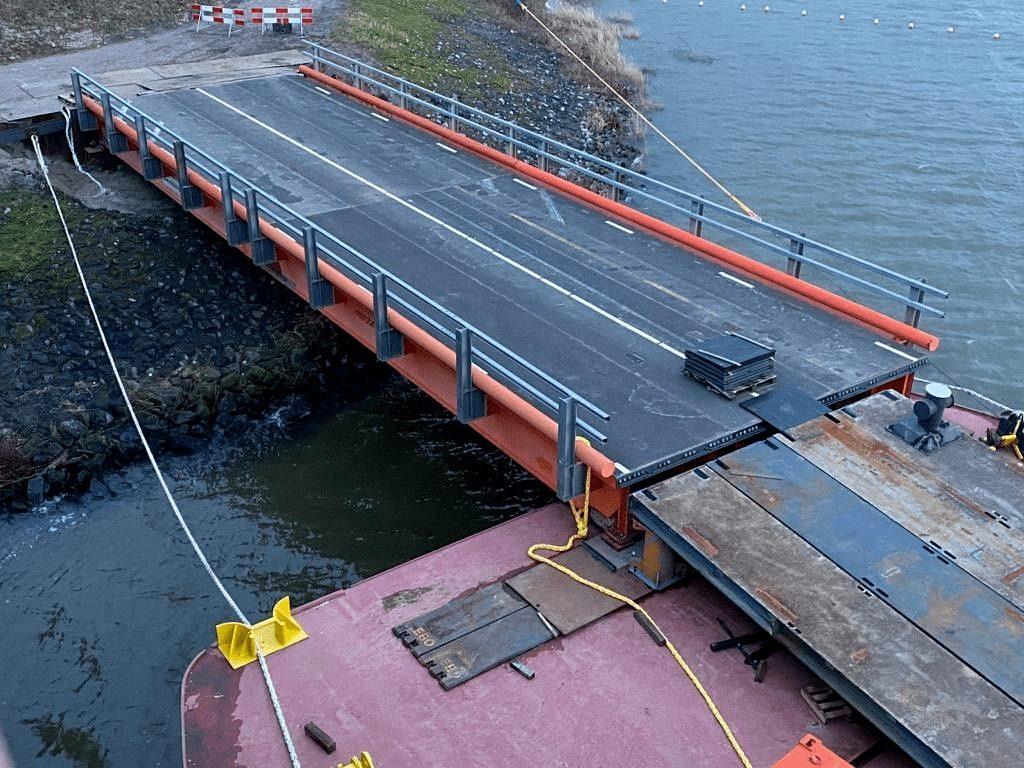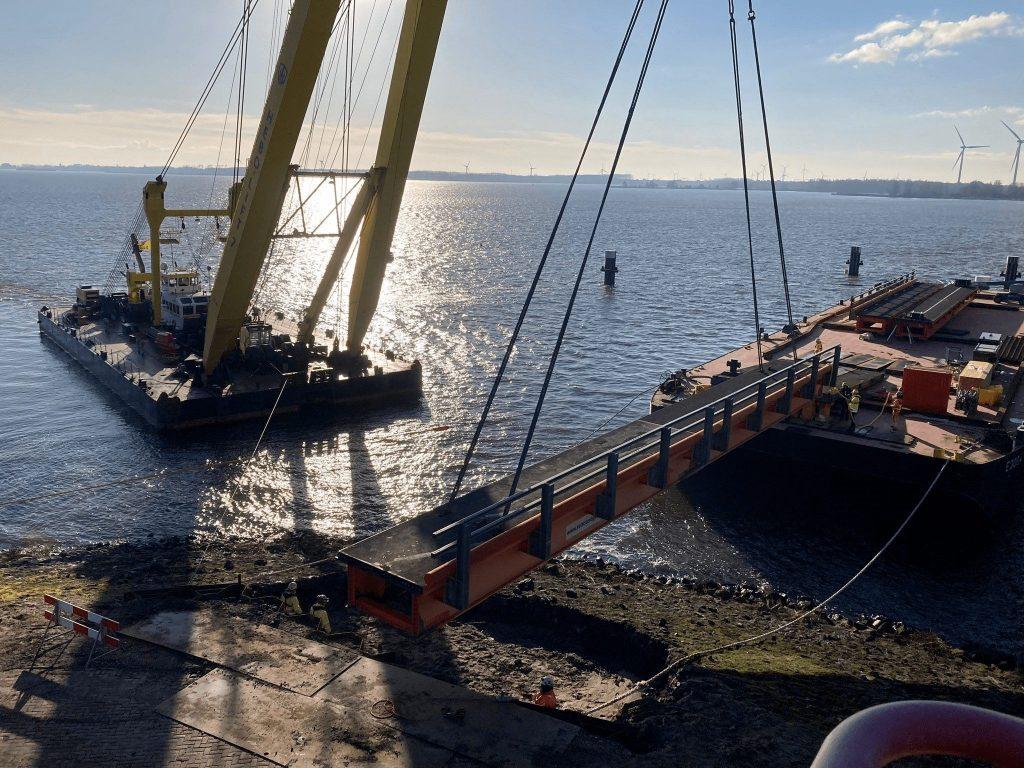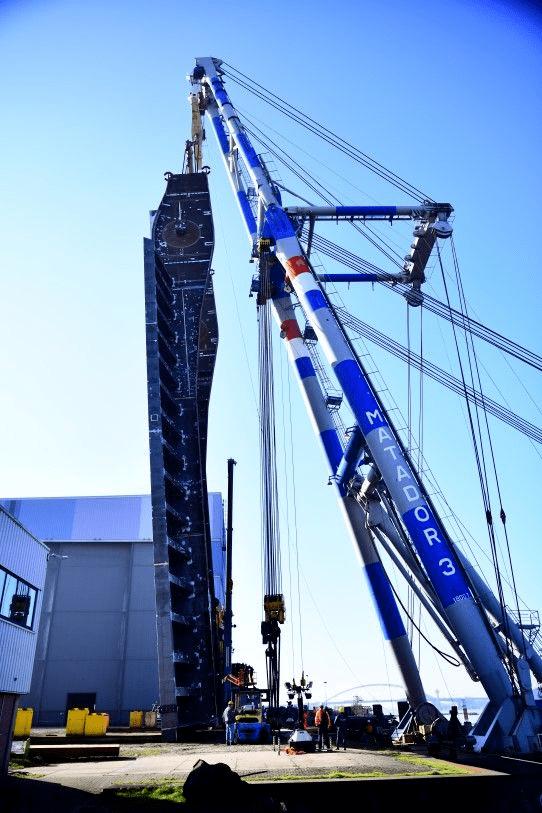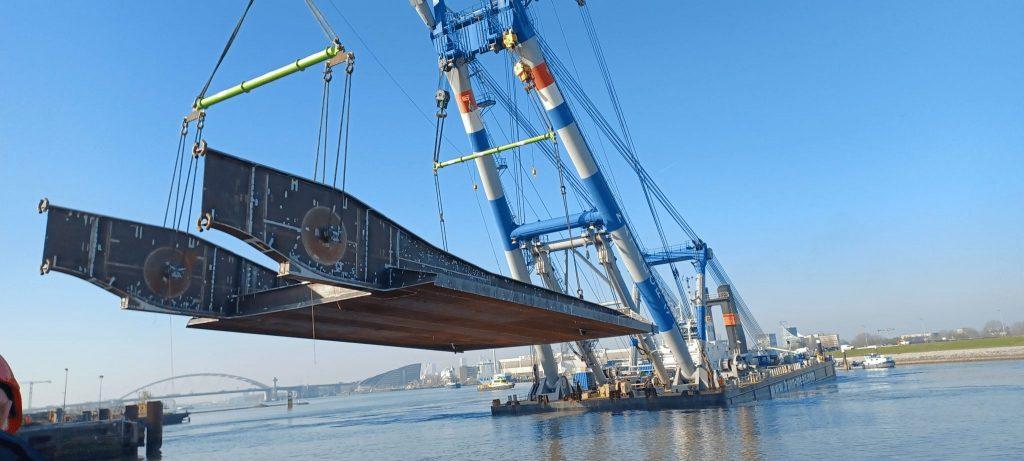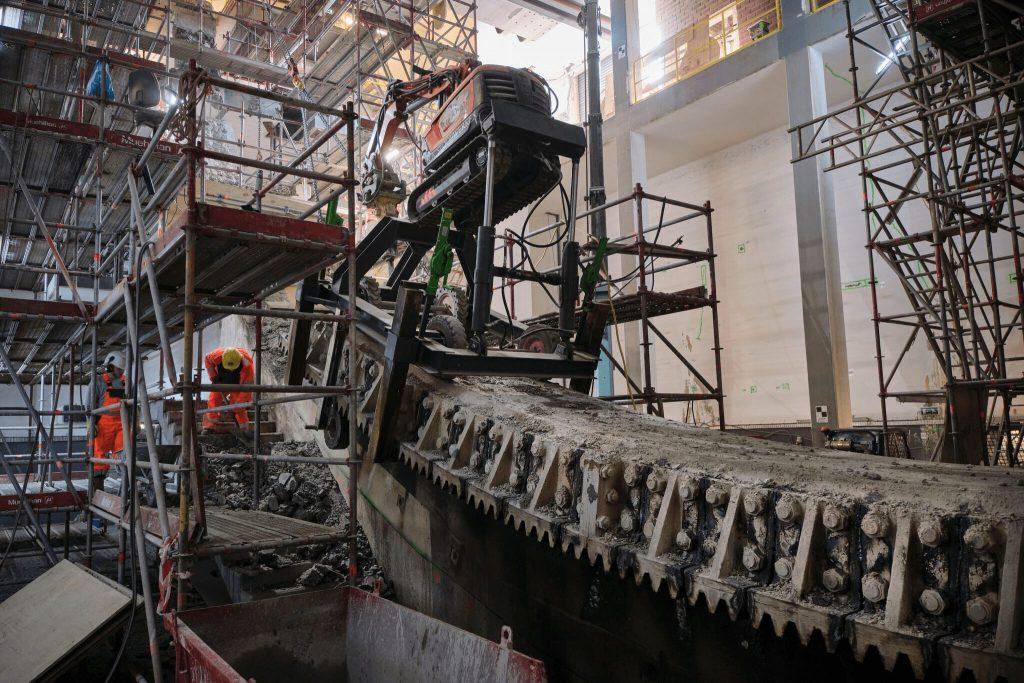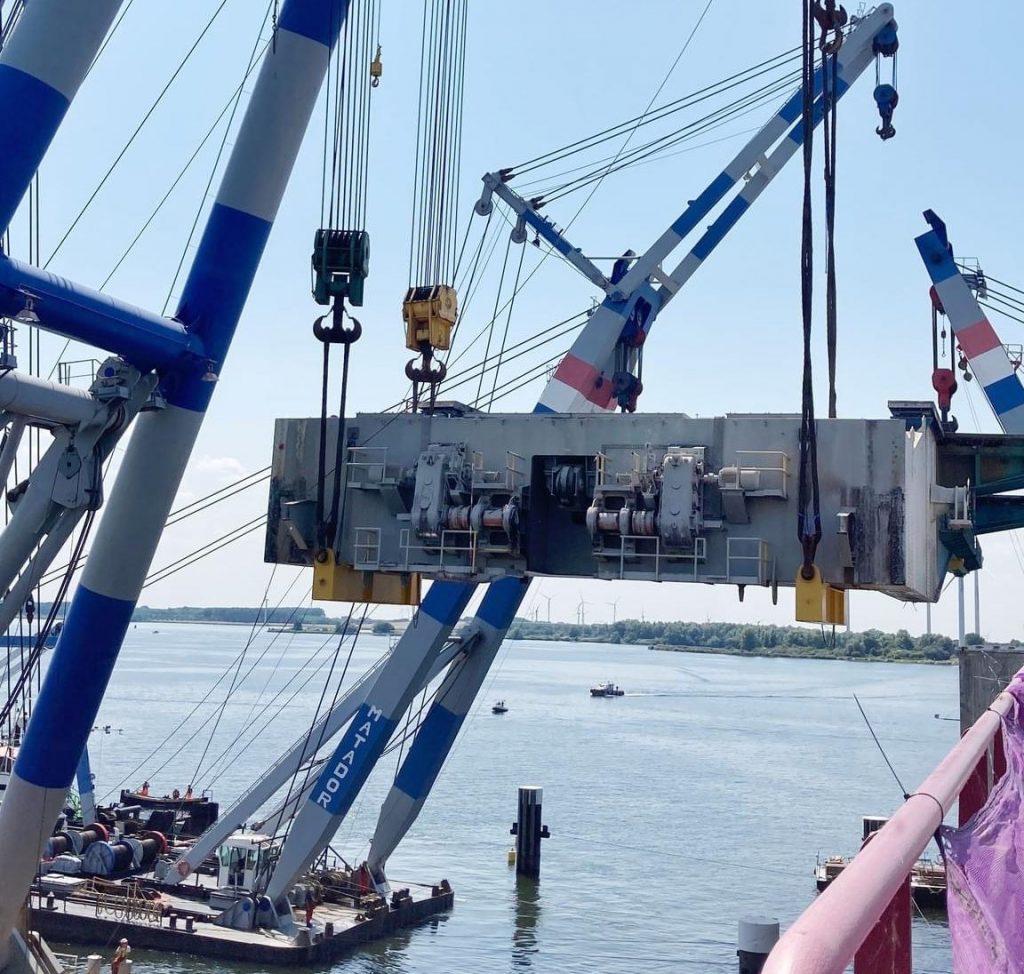The Haringvliet Bridge will soon receive a new moving part, as the bridge’s valve has reached the end of its technical lifespan. The renovation of the bridge is being carried out by Combination Mobilis TBI and Croonwolter&dros, commissioned by Rijkswaterstaat. Together with Hollandia Infra and Machinefabriek Rusthoven B.V., they are responsible for the design and execution of the renovation work.
Auxiliary bridge
To make the first steps of the renovation possible, an auxiliary bridge was placed next to the Haringvliet Bridge in January. This auxiliary bridge consists of a large pontoon with retrobridges (segments) installed from the pontoon on the mainland. The auxiliary bridge will be used for various works, including the removal of the rack railway, replacement of the controls and renovation of the basement. Thanks to the auxiliary bridge, workers will have access to the site via the side of the basement, avoiding any disruption to traffic on the A29.
Tilting action
An important milestone in the Haringvliet Bridge renovation project was reached on February 14th. The new bridge halyard, which has an impressive weight of 725 tons and is no less than 57 meters long, was tilted with the help of the floating gantry ‘Matador 3’ and accurately placed on the frame of SPMT trucks. This colossal operation, made possible by the entire team, from engineers to skilled employees of Bonn & Mees, was successfully completed and deserves great credit.
Building a bridge halyard is always a complex task. Most of the welding takes place on the underside of the bridge, so the structure is built upside down. After installing girders and troughs at the bottom, the entire structure must be tilted to be able to work on the top. Due to the enormous size and weight of the bridge halyard, complex calculations and special auxiliary structures are required in advance to safely carry out the tilting operation. The successful tilting operation of the Haringvliet Bridge was therefore an extraordinary milestone in the project.
Bascule basement
In April, while traffic continued to move across the bridge, the Mobilis and Struijk teams worked hard in the bascule basement of the Haringvliet Bridge. They worked seven days a week and 24 hours a day to complete the extensive job.
By working intensively now, the summer months can be used optimally for work that can only be carried out when there is no traffic crossing the bridge. In addition to demolishing old concrete and steel structures, construction of the new bridge is already beginning in some places.
Lifting out old bridge valve
On Friday, June 16, the old valve of the Haringvliet Bridge was removed after nearly sixty years of service. Using three floating trestles, the valve, also known as the bridge halyard, with an impressive weight of 1,860,000 kg was lifted out. The process of lifting out the old bridge valve was in cooperation with Bonn & Mees Floating Derricks BV and HEBO.

